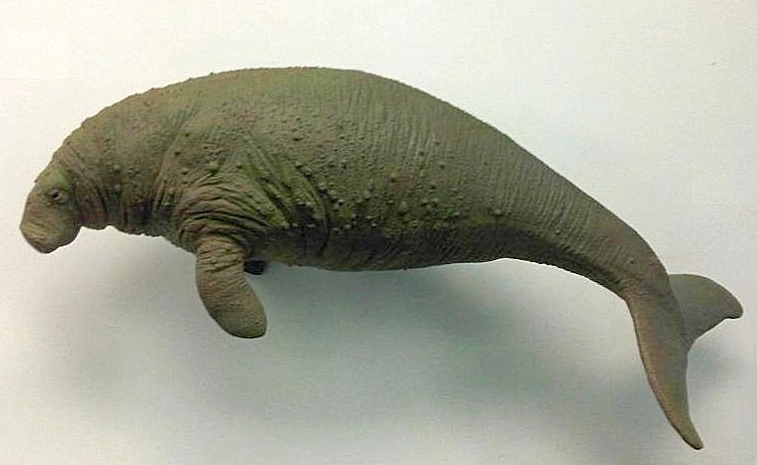
Steller’s sea cows, remarkable creatures with unique adaptations, stood out among their relatives, the sirenians. While dugongs and manatees thrive in warm tropical waters, Steller’s sea cow had evolved to thrive in the sub-Arctic waters of the northern Pacific Ocean.

Their specialization led to remarkable sizes, with adults growing up to 10 meters in length and weighing as much as 11 tonnes, surpassing many contemporary whales.

For comparison, an adult male killer whale typically measures around eight meters in length and weighs up to six tonnes.

Richard Sabin, Principal Curator of Mammals at the Museum, notes that Steller’s sea cow, Hydrodamalis gigas, remains enigmatic from a natural history perspective, adding to its allure.

Due to minimal scientific scrutiny, the intricacies of their biology and behavior remain largely speculative. While we can draw parallels with the dugong, a closely related species, to infer their ecological roles, the lack of systematic observations limits our understanding of Steller’s sea cows, leaving us with scant empirical data.

The demise of Steller’s sea cow can be attributed to the relentless pursuit of luxurious fur apparel by Europeans during the era of the international fur trade. Richard describes the frenzy akin to a gold rush, fueled by the colonization of North American territories teeming with fur-bearing animals.

Although Steller’s sea cow wasn’t initially the focal point, its tragic fate was sealed when Russian fur traders stumbled upon vast populations of sea otters inhabiting the same coastal regions from Japan through the Bering Sea into North America—precisely where the sea cows resided.

“The shallow waters around the Commander and Aleutian islands were primarily the feeding areas for the Steller’s sea cow,” explains Richard. “It was unfortunate that the sea cows lay in an area along a route that was necessarily used by the hunters moving between North America and Russia.”

During a Russian expedition led by Vitus Bering, which later bestowed his name upon the waterway, German zoologist Georg Wilhelm Steller encountered the marine mammals.

He holds the distinction of being the sole scientist known to have observed the creatures alive. In 1741, while stranded on what is now Bering Island due to a shipwreck, Steller formally documented the discovery of the sea cows. Consequently, the species was named in his honor.

Most of our understanding of the animals’ behavior and ecology originates from Georg Wilhelm Steller’s brief observations, often during the gruesome process of their slaughter and butchering on beaches. Steller documented their highly social nature, noting their tendency to gather in large groups while feeding on kelp in the shallow coastal waters.

However, this sociability proved to be their downfall. Steller observed that when sailors targeted a female sea cow, a protective male would aggressively pursue the boat, persistently following it even after the female’s demise.

Despite their formidable blubber, which could measure up to 10 centimeters thick in places, serving as insulation in cold waters, it offered little defense against the onslaught of harpoons. Steller also remarked on the delectable taste of their blubber, likening it to having a hint of almond flavor.

Virtually every characteristic of Steller’s sea cows seemed to hasten their decline. Their reliance on kelp as a primary food source confined them to shallow waters, where they became easy targets.

Social behaviors, such as protective instincts, inadvertently exposed them to additional dangers. Even their thick blubber, essential for insulation, proved detrimental as it made them irresistible targets for hunters. Sadly, less than three decades after their discovery in 1741, Steller’s sea cows faced extinction, with the last known individual perishing in 1768.
Relevant articles:
– Modelling the extinction of Steller’s sea cow, National Institutes of Health (NIH) (.gov)
– 6 Animals We Ate Into Extinction, Britannica
– Steller’s sea cow: the first historical extinction of a marine mammal at human hands, Natural History Museum
– Sea cow | Extinct Marine Mammal, Arctic Habitat, Britannica

